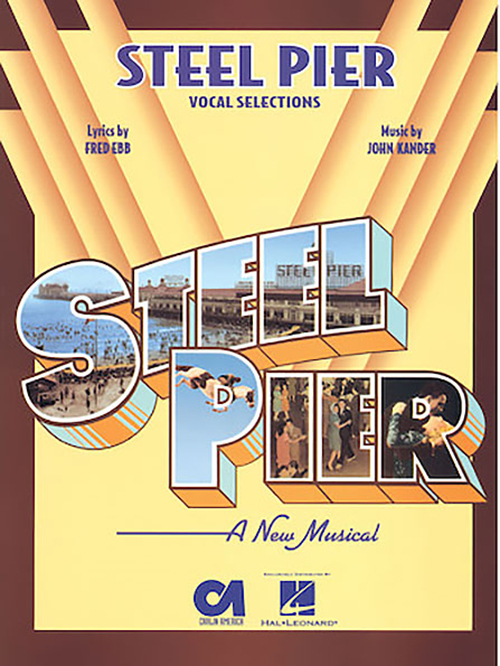By Bruce Klauber
Although Atlantic City has been immortalized in movies, song and on television, efforts to bring the essence of the queen of resorts to the Broadway stage have been less than successful.
In fact, enterprising producers have only attempted to bring the Atlantic City story to the legitimate stage twice in history: once in 1898, and the other in 1997.
Not much is known about the first production titled, “In Atlantic City.”
Billed as “a musical in three acts,” the production was staged at the Star Theatre on Broadway and ran for only nine performances from Aug. 13 to Aug. 20, 1898. The credits of producer Stewart Lithgow and musical director Louis Jacobson have faded into obscurity. Scenic designer Walter Burridge has a small part of stage history as the designer for a number of lesser Broadway productions dating from 1887 until 1912.
As for the Star Theatre on 844 Broadway, it opened in 1861, seated 1,448, and was demolished in 1901.
In 1996, almost 100 years later, several Broadway veterans came together to bring a musical with an Atlantic City focus to the stage once again. It was called “Steel Pier,” and with composers John Kander and Fred Ebb aboard, to say nothing of writer David Thompson of “Chicago” fame, acclaimed director Scott Ellis, and award-winning choreographer Susan Stroman, the consensus was that the show would be an instant and long-running hit.

According to theater historian and author Mark Robinson, “The composing team of Kander and Ebb were often attracted to properties that allowed them to tell a show-within-a-show story, often using the show or entertainment style within to provide commentary on the show the theater audience is watching.”
As examples, Robinson noted that Kander and Ebb’s “Cabaret” was about a cabaret, “Chicago” focused on vaudeville, and “Kiss of the Spider Woman” was basically about film. “It shouldn’t have been a surprise,” added Robinson, “that the team found a way to utilize the dance marathons in Atlantic City of the 1930s to similar effect in the short-lived musical ‘Steel Pier.’”
The buzz on The Great White Way was strong. “Going into the 1996-1997 Broadway season,” Robinson noted, “‘Steel Pier’ was an eagerly anticipated property for Broadway. But then any Kander and Ebb musical was something to get excited for. The duo had come off a critical success with ‘Kiss of the Spider Woman,’ which won the 1993 Tony Award for Best Musical. Surely their next outing would be just as uniquely brilliant.”
Choreographer Susan Stroman had rarely been so excited about a project. “Working with Kander and Ebb, Scott Ellis, and David Thompson early in my career was a gift,” Stroman wrote not long after the show closed. “All of these collaborators loved dance, and ‘Steel Pier’ was full of dance from beginning to end.
“The story took place in 1933 on the Steel Pier in Atlantic City when ballroom dancing was at its most popular. Creating a story about a dance marathon during the Great Depression and the Steel Pier made great material for a new musical.
“The Steel Pier in Atlantic City was called the ‘Showplace of the Nation.’ It featured concerts, rides, sideshows, flagpole sitters, the diving bell, a water show, and the famous High Diving Horse. The sounds of rides and roaring waves are still fresh in my memory. I remember summer days sitting with my parents on the end of the pier, eating hot dogs and throwing ice cubes at the jellyfish in the water below. Near the end of the Steel Pier sat the Marine Ballroom, a beautiful Art Deco building that could hold 5,000 people and played home to countless orchestras, headliners, dancers and dance contests. The Marine Ballroom was where we placed our dance marathon.
“Dance marathons were popular events during the Great Depression; 1933 was the worst year of the depression, with one out of four Americans unemployed. People would sign up for these marathons hoping to win big money. As the couples danced, crowds in the stands would throw coins at their favorites. Promoters would seek out entertainers with special skills to spice up the show and sell more tickets. Dance marathons were both genuine endurance contests and staged performance events. Some of the contestants would go on to dance their way to fame.
“Marathons introduced new songs, new dance styles, and the soap opera-like intensity of an audience rooting for its favorite couple. The flirtations, the intrigue, the passion, and the endurance all made for captivating characters who danced with the hope of surviving the massive economic strain. These people were dancing for their lives.”
“Steel Pier” opened at the Richard Rodgers Theatre on Broadway on April 24, 1997. The trade paper Variety loved it, but had some reservations about the plot. The New York Times panned it, with a headline that read: “Party’s over, chum, just keep dancing.” Other reviewers praised the songs and the acting, but mentioned a general lack of energy and a meandering book.
The show closed on June 28, 1997, after just 76 performances. Still, it was nominated for 11 Tony Awards including “Best Musical,” and nine Drama Desk Awards. In that year, “Titanic” walked away with most of the awards.
“Steel Pier” was revived on a limited basis in London at the Union Theater. It ran from Oct. 31 to Nov. 24, 2012, and that’s the last it was heard from. There was a cast album, but it yielded no hit songs, and there are no plans to revive the project.
It’s easy to sit back and detail all that went wrong with “Steel Pier,” especially 27 years after the fact. Having had a soft spot for the Steel Pier for most of my life, and having written about it since my first newspaper article was published in the early 1970s, I made sure I was in the audience during the show’s brief Broadway run.
I was entertained, but not thrilled about what I saw. It was, by and large, about dance marathons, and I felt shortchanged. Despite choreographer Susan Stroman’s enthusiasm about what the Steel Pier was and her youthful experiences there, the show simply didn’t capture the captivating, freewheeling and sometimes electrifying excitement of the Steel Pier, or Atlantic City, for that matter. Perhaps no stage show really could.
I’ll take the real thing anytime.
High Notes: The South Jersey Jazz Society has checked in to begin spreading the word early about two, special events coming early this fall that are certain to be sellouts. On Sept. 25, bassist Andy Lalasis, profiled in these pages recently, will receive the coveted George Mesterhazy Jazz Master Award at a gala dinner to be held at the Greate Bay Country Club. And The Gateway Playhouse and Gregory’s restaurant in Somers Point will host a unique and eagerly-anticipated jazz series on Thursday through Saturday, Oct. 10, 11 and 12. “Basses Loaded” will feature five of the finest bassists in the world of jazz, including rising star Ciara Moser, Brian Bromberg, John Patitucci, Andy Lalasis and Philadelphian Mike Boone, with his swinging son, Mekhi, on drums. Tickets and details for all events are available at southjerseyjazz.org.








